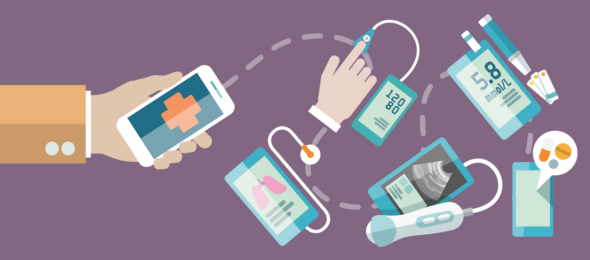Since ArchHacks is just around the corner (November 4-6), we thought it would be useful to go into more detail about our theme: HealthTech. Specifically, what HealthTech is, how it started, and what it has evolved into today.
HealthTech, short for Health Technology, involves applying a combination of medical and engineering knowledge to solving health-related problems. HealthTech includes everything from drugs, vaccines, medical devices, and procedures, to the general improvement of medical systems. To better understand how HealthTech has evolved, it is useful to divide its history into three periods: the pre-computer period, the pre-Internet period, and the post-Internet period.
One of the very first HealthTech devices was the stethoscope, invented in 1816 to make it easier to listen to a person’s heartbeat without having to press your ear against their skin. In 1895, Wilhelm Röntgen accidentally discovered X-rays, which made it possible to identify bone structure. Devices that we might now take for granted were revolutionary in their time and pushed medical innovation forward.
In the next century, as computers became more powerful, the size of devices decreased and brought about inventions such as the pacemaker and other medical implants. Around the same time, the now ubiquitous MRI and CT scan machines were invented. New devices were of increasing complexity and functionality and greatly improved medicine.
Today, the proliferation of smartphones, coupled with powerful internet, has made it easier to access information than ever before.

Source: Macrovector/Shutterstock.com
Innovation has made it possible for consumers to use portable devices to access their medical information, monitor their vital signs, take tests at home, and carry out a wide range of tasks. The patient has greater control over his or her health, and is less dependent on doctors and hospitals.
There is an increased demand in HealthTech due to its many benefits and ease of access. This has incentivized developers to create new apps centered around health, and it has opened up the possibility for unprecedented collaboration. As data is now collected in real time, companies are able to collect large amounts of personal medical data. The convergence of Artificial Intelligence and Big Data is allowing doctors to find new patterns in this data and use it to approach finding cures in unique ways.
One of the biggest challenges in HealthTech is to create an ecosystem where devices can all communicate with one another to provide consumers with personalized solutions. Thousands of mobile health technologies exist, ranging from diet and fitness trackers to sleep monitors, but each of these devices is more useful when combined with others. A study by Grand View Research reported that the HealthTech market is anticipated to reach $ 104.5 billion by the year 2020.

To tap into this potential and remain competitive in the market, HealthTech companies will have to become less isolated and collaborate in order to create the best products and provide the best value to their consumers.
Want to get involved in ArchHacks? Apply to be a volunteer!



